Fiat Panda vs Toyota C-HR – Differences & prices compared
Costs and Efficiency:
Price and efficiency are often the first things buyers look at. Here it becomes clear which model has the long-term edge – whether at the pump, the plug, or in purchase price.
Fiat Panda has a clearly advantage in terms of price – it starts at 14100 £, while the Toyota C-HR costs 29100 £. That’s a price difference of around 15000 £.
Fuel consumption also shows a difference: Toyota C-HR manages with 0.80 L and is therefore convincingly more efficient than the Fiat Panda with 5 L. The difference is about 4.20 L per 100 km.
Engine and Performance:
Power, torque and acceleration say a lot about how a car feels on the road. This is where you see which model delivers more driving dynamics.
When it comes to engine power, the Toyota C-HR has a significantly edge – offering 223 HP compared to 70 HP. That’s roughly 153 HP more horsepower.
In acceleration from 0 to 100 km/h, the Toyota C-HR is convincingly quicker – completing the sprint in 7.40 s, while the Fiat Panda takes 13.90 s. That’s about 6.50 s faster.
In terms of top speed, the Toyota C-HR performs hardly perceptible better – reaching 180 km/h, while the Fiat Panda tops out at 164 km/h. The difference is around 16 km/h.
Space and Everyday Use:
Cabin size, boot volume and payload all play a role in everyday practicality. Here, comfort and flexibility make the difference.
Seats: Toyota C-HR offers somewhat more seating capacity – 5 vs 4.
In curb weight, Fiat Panda is significantly lighter – 1055 kg compared to 1505 kg. The difference is around 450 kg.
In terms of boot space, the Toyota C-HR offers decisively more room – 447 L compared to 225 L. That’s a difference of about 222 L.
In maximum load capacity, the Toyota C-HR performs clearly perceptible better – up to 1155 L, which is about 285 L more than the Fiat Panda.
When it comes to payload, Toyota C-HR a bit takes the win – 425 kg compared to 365 kg. That’s a difference of about 60 kg.
Who comes out on top?
Overall, the Toyota C-HR shows itself to be outperforms in nearly all aspects and secures the title of DriveDuel Champion.
It convinces with the more balanced overall package and proves to be the more versatile choice for everyday use.
Costs and Consumption
View detailed analysis
Engine and Performance
View detailed analysis
Dimensions and Body
View detailed analysis
 @ Toyota Motor Corporation
@ Toyota Motor Corporation
Toyota C-HR
Fiat Panda
The Panda is a charming, no-nonsense city companion that mixes cheerful Italian flair with genuinely useful practicality, making tight streets and daily errands feel less of a chore. Its honest simplicity, clever packaging and a dash of cheeky character make it a smart, low-stress buy for people who prefer sensible perks over showroom flash.
details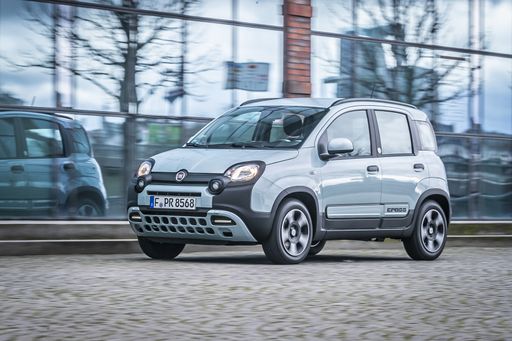 @ Fiat / Stellantis Media
@ Fiat / Stellantis Media
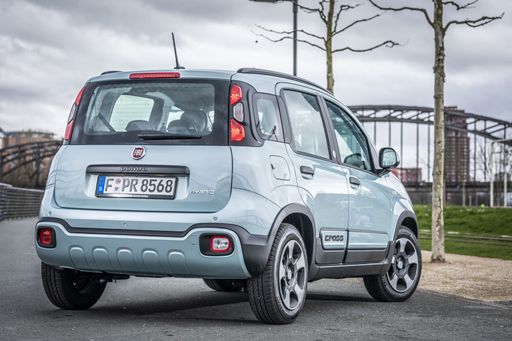 @ Fiat / Stellantis Media
@ Fiat / Stellantis Media
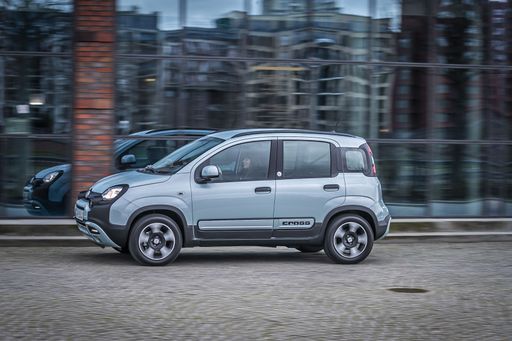 @ Fiat / Stellantis Media
@ Fiat / Stellantis Media
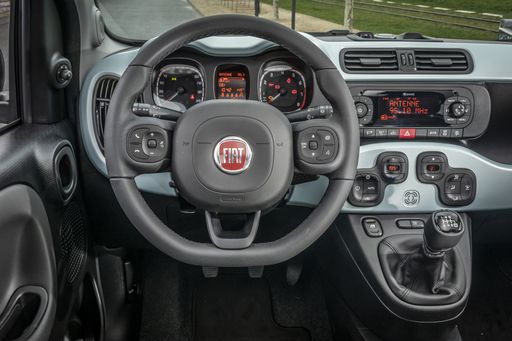 @ Fiat / Stellantis Media
@ Fiat / Stellantis Media
Toyota C-HR
The Toyota C-HR cuts a striking figure with its angular styling and coupe-like profile, so you’ll never go unnoticed in the supermarket car park. It balances everyday practicality with a nimble, city-friendly personality, making routine commutes feel a touch more fun without asking for forgiveness.
details @ Toyota Motor Corporation
@ Toyota Motor Corporation
 @ Toyota Motor Corporation
@ Toyota Motor Corporation
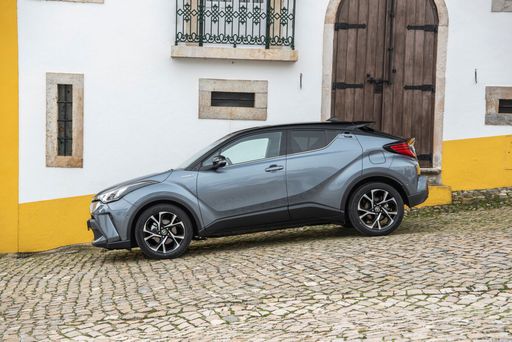 @ Toyota Motor Corporation
@ Toyota Motor Corporation
 @ Toyota Motor Corporation
@ Toyota Motor Corporation
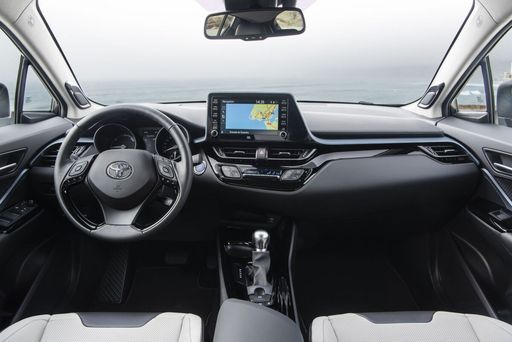 @ Toyota Motor Corporation
@ Toyota Motor Corporation
 @ Fiat / Stellantis Media
@ Fiat / Stellantis Media
|
 @ Toyota Motor Corporation
@ Toyota Motor Corporation
|
|
|
|
Costs and Consumption |
|
|---|---|
|
Price
14100 £
|
Price
29100 - 42800 £
|
|
Consumption L/100km
5 L
|
Consumption L/100km
0.8 - 5.1 L
|
|
Consumption kWh/100km
-
|
Consumption kWh/100km
-
|
|
Electric Range
-
|
Electric Range
68 km
|
|
Battery Capacity
-
|
Battery Capacity
-
|
|
co2
113 g/km
|
co2
17 - 115 g/km
|
|
Fuel tank capacity
38 L
|
Fuel tank capacity
43 L
|
Dimensions and Body |
|
|---|---|
|
Body Type
Hatchback
|
Body Type
SUV
|
|
Seats
4
|
Seats
5
|
|
Doors
5
|
Doors
5
|
|
Curb weight
1055 kg
|
Curb weight
1505 - 1755 kg
|
|
Trunk capacity
225 L
|
Trunk capacity
350 - 447 L
|
|
Length
3635 mm
|
Length
4362 mm
|
|
Width
1643 mm
|
Width
1832 mm
|
|
Height
1551 mm
|
Height
1558 - 1564 mm
|
|
Max trunk capacity
870 L
|
Max trunk capacity
1076 - 1155 L
|
|
Payload
365 kg
|
Payload
375 - 425 kg
|
Engine and Performance |
|
|---|---|
|
Engine Type
Petrol MHEV
|
Engine Type
Full Hybrid, Plugin Hybrid
|
|
Transmission
Manuel
|
Transmission
Automatic
|
|
Transmission Detail
Manual Gearbox
|
Transmission Detail
CVT
|
|
Drive Type
Front-Wheel Drive
|
Drive Type
Front-Wheel Drive, All-Wheel Drive
|
|
Power HP
70 HP
|
Power HP
140 - 223 HP
|
|
Acceleration 0-100km/h
13.90 s
|
Acceleration 0-100km/h
7.4 - 9.9 s
|
|
Max Speed
164 km/h
|
Max Speed
175 - 180 km/h
|
|
Torque
92 Nm
|
Torque
-
|
|
Number of Cylinders
3
|
Number of Cylinders
4
|
|
Power kW
51 kW
|
Power kW
103 - 164 kW
|
|
Engine capacity
999 cm3
|
Engine capacity
1798 - 1987 cm3
|
General |
|
|---|---|
|
Model Year
2024
|
Model Year
2024 - 2025
|
|
CO2 Efficiency Class
C
|
CO2 Efficiency Class
C, B
|
|
Brand
Fiat
|
Brand
Toyota
|
Is the Fiat Panda offered with different drivetrains?
Available configurations include Front-Wheel Drive.
The prices and data displayed are estimates based on German list prices and may vary by country. This information is not legally binding.
